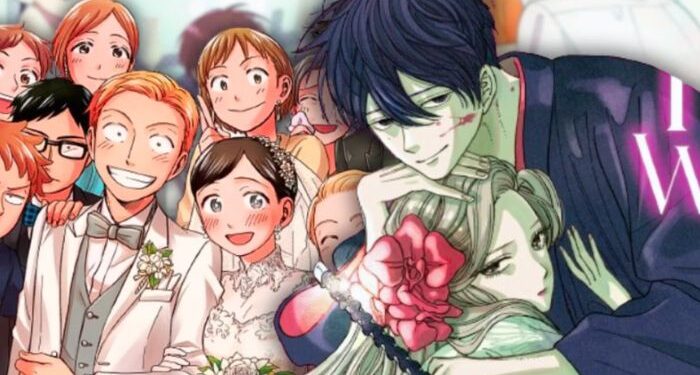Romance manga has evolved significantly over the years, reflecting changes in cultural norms, reader preferences, and storytelling techniques. Today’s romance manga showcases a variety of modern trends that cater to diverse audiences and explore new themes. In this article, we will explore the latest trends in romance manga, focusing on emerging genres, unique storylines, and popular tropes that are capturing readers’ imaginations. We’ll also highlight some lesser-known manga that exemplify these trends, providing fresh perspectives and valuable insights for fans. For further exploration of contemporary romance manga, check out zinmanga.

The Rise of Diverse Representation
1. Inclusive Characters and Themes
Modern romance manga increasingly features diverse characters and themes, reflecting a broader range of experiences and identities. This trend includes greater representation of LGBTQ+ characters, different cultural backgrounds, and various gender identities. Manga like “Given” by Natsuki Kizu, which explores a gay romance within a music context, highlights this shift. The manga not only portrays a same-sex relationship but also delves into complex emotional and psychological aspects, offering a nuanced depiction of love and identity.
2. Non-Traditional Relationship Dynamics
Contemporary romance manga often explores non-traditional relationship dynamics, such as polyamory, long-distance relationships, and unconventional love interests. “Fuyu no Hanashi” by Koyama Koko presents a unique take on winter romance and addresses the challenges of maintaining relationships in different life circumstances. This approach provides a refreshing departure from traditional romance tropes and resonates with readers seeking more realistic portrayals of love.
Blending Genres for Fresh Narratives
1. Romance Meets Fantasy and Sci-Fi
The blending of romance with fantasy and science fiction has become increasingly popular, offering readers imaginative and engaging storylines. “Kakuriyo: Bed & Breakfast for Spirits” by Midori Yūki combines romance with supernatural elements, creating a rich, otherworldly narrative that captivates readers. The fusion of genres allows for creative storytelling and introduces new ways to explore romantic themes.
2. Romantic Comedy and Slice-of-Life
Romantic comedy and slice-of-life genres continue to be popular, providing light-hearted and relatable content. Manga like “Wotakoi: Love is Hard for Otaku” by Fujita blends romance with humor and the everyday lives of Otaku characters. This genre allows readers to enjoy romance in a more relaxed and entertaining context while exploring the dynamics of relationships through a comedic lens.
Exploring Psychological Depth and Realism
1. Emotional Complexity and Realistic Portrayals
Modern romance manga often delves into psychological depth and emotional complexity, offering a more realistic portrayal of love and relationships. Manga such as “I Want to Eat Your Pancreas” by Yoru Sumino explores themes of illness, mortality, and the impact of these issues on romantic relationships. This approach provides a profound look at how real-life challenges shape and affect love.
2. Character-Driven Stories
Character-driven stories are becoming increasingly popular, focusing on the development and growth of individuals within romantic contexts. “My Senpai is Annoying” by Shiro Manta showcases a romance that develops through character interactions and personal growth rather than just dramatic plot twists. This trend emphasizes the importance of character dynamics in creating compelling and relatable romance narratives.

Digital and Serialized Formats
1. Webtoons and Digital-First Releases
The rise of webtoons and digital-first releases has revolutionized the way romance manga is distributed and consumed. Platforms like Webtoon and MangaPlus offer serialized formats that allow readers to access new chapters regularly. Manga such as “Lore Olympus” by Rachel Smythe, which reimagines the story of Hades and Persephone, exemplifies this trend with its digital-first approach and episodic format.
2. Interactive and Multimodal Stories
Interactive and multimodal storytelling is becoming more prevalent in romance manga, integrating elements such as reader choices and multimedia content. Manga like “The Promised Neverland” by Kaiu Shirai and Posuka Demizu, while primarily a thriller, uses interactive elements to enhance reader engagement. This trend reflects the growing demand for innovative storytelling techniques that blend traditional manga with modern digital experiences.
Lesser-Known Modern Romance Manga
To provide a broader view of contemporary trends, here are some lesser-known romance manga that exemplify current trends:
- “Sasurai Onsen” by Amano Shinobu: A slice-of-life manga that explores the romance between a hot spring owner and a frequent guest, incorporating themes of personal growth and community.
- “Koi to Uso” by Musawo: This manga features a unique twist on romance with a government-mandated matchmaking system, exploring themes of choice and societal expectations.
- “Akuyaku Reijou wa Danna-sama wo Yasesasetai” by Rina Yagami: A reverse harem manga where the protagonist strives to improve her partner’s well-being, highlighting themes of personal development and mutual support.
Modern romance manga is marked by its diversity, genre-blending, and psychological depth, reflecting the evolving interests and experiences of readers. From inclusive representations and non-traditional relationship dynamics to genre fusion and digital storytelling, these trends showcase the genre’s adaptability and innovation. Lesser-known works further enrich the landscape, offering fresh perspectives and narratives.
For a deeper dive into the latest trends and to discover a wide range of contemporary romance manga, visit ZinManga. Our platform provides valuable resources and insights into the dynamic world of modern romance manga, offering readers a curated selection of influential and engaging stories.































